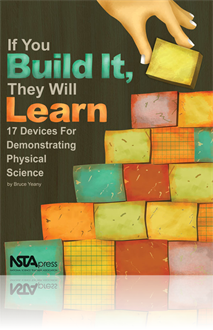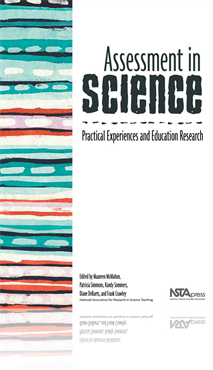All Resources
Book Chapter
The solar motor is an excellent way of demonstrating one method of changing solar energy directly into motion. For students to understand its operatio...
Book Chapter
In this chapter, find out what a can of soda would feel like on other planets by altering the contents of several containers to simulate the change in...
Book Chapter
This chapter provides the opportunity for students to observe the breakfast box sitting in plain view on a shelf, table, window ledge or in any other ...
Book Chapter
A fossil is any evidence of an ancient organism. The remains of the body, such as bones, shells, leaf impressions, etc., are called body fossils. The ...
Book Chapter
What Can You Learn From Fossils?
At one point or another, it seems like all students are interested in paleontology. Wonderful extinct animals like dinosaurs excite the imagination l...
Book Chapter
Mass Extinction and Meteor Collisions With Earth
Paleontologists divide extinctions into two broad categories—background extinctions and mass extinctions. Background extinctions occur continuously ...
Book Chapter
How Are Fossils Collected and Prepared?
This chapter describes some ways that fossils are found and prepared and guides the reader though the steps of preparing real fossil specimens. Three ...
Book Chapter
How Can You Tell the Age of Earth?
In the activity in this chapter, a table of measurements is presented that can be used to construct a model of the age of Earth and some of the most i...
Book Chapter
This chapter explores the methods of cladistics and facilitates an understanding of evolution through active learning. Four activities are presented t...
Book Chapter
Diversity, Classification, and Taxonomy
This chapter places fossils in the contexts of their distribution on the globe and how we name them and quantify their communities. The activities ana...
Book Chapter
This chapter looks at fossils from a humanistic perspective. Fossil fuels—coal, oil, and natural gas—make up over 80% of our energy sources. They ...
Book Chapter
Whenever a fossil is beautiful, appealing, or is more than of ordinary significance, it may be called art. The first activity in this chapter challeng...
Book Chapter
A Knowledge-Based Framework for the Classroom Assessment of Student Science Understanding
Recent research in cognitive science linked with established principles of educational assessment provide a framework that science teachers and resear...
Book Chapter
Evolving Ideas: Assessment in an Evolution Course
As science instruction moves from lectures that emphasize lists of facts to more student-centered approaches that emphasize knowledge generation and j...
Book Chapter
Integrating an Assessment Plan Into A K—12/ University Engineering Partnership
A comprehensive assessment plan is a valuable component of a university’s K—12 outreach effort. The K—12 Engineering Outreach Initiative has int...




